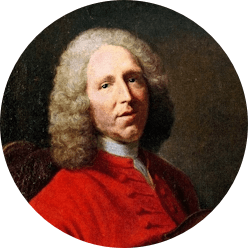
Жан-Филипп Рамо
25 сентября 1683 г. - Dijon (France) — 12 сентября 1764 г. - Paris (France)
About
Жан-Филипп Рамо: плохой ученик, который предпочел музыку
Жан-Филипп Рамо учился в иезуитском колледже в Годране, но был плохим учеником и нарушал занятия. Его родители хотели, чтобы он изучал право, но Рамо решил, что хочет стать музыкантом. Его отец учил его музыке и отправил в Италию, где он пробыл всего три месяца. Вернувшись во Францию, он начал карьеру органиста, играя в соборе Клермон-Феррана, в Авиньоне и в Лионе.
Рамо, знаменитый теоретик барочной музыки
Жан-Филипп Рамо придавал большое значение теоретическим работам. В 1722 году он начал революцию в музыкальной теории своим Трактатом о гармонии, в котором рассматривал музыку как науку и пытался вывести универсальные гармонические принципы из природных причин. Эта работа стала окончательным авторитетом в музыкальной теории, сформировав основу для обучения западной музыке, которая сохраняется и сегодня.
Жан-Филипп Рамо, блестящий композитор
Когда ему исполнилось пятьдесят, его карьера как великого композитора действительно началась. До 1733 года Жан-Филипп Рамо сочинил лишь несколько мотетов, кантат и пьес для клавесина, но его первая опера, Ипполит и Арисия, вскоре была поставлена в Королевской академии музыки. Через шесть лет он написал еще четыре шедевра: Галантные Индии (1735), Кастор и Поллукс (1737), Празднества Гебы и Дардан (1739).
Рамо, музыкант короля, источник споров
В 1745 году Рамо написал два балета с Вольтером: Принцесса Наварры и Храм Славы. В этом же году Жан-Филипп Рамо стал музыкантом короля Людовика XV, хотя его музыка была источником споров: разгорелся спор вокруг работ Рамо, которые благоприятствовали новому итальянскому стилю, обвиняемому в опасности для традиционной французской оперы.

